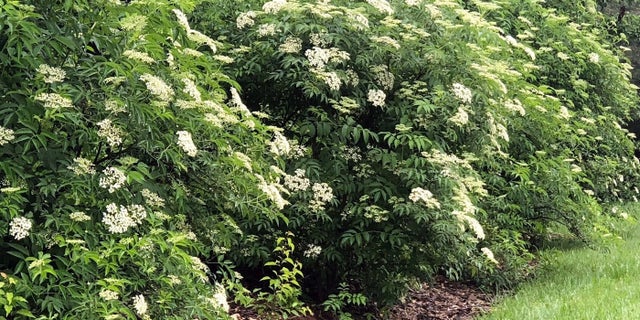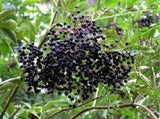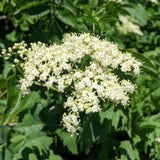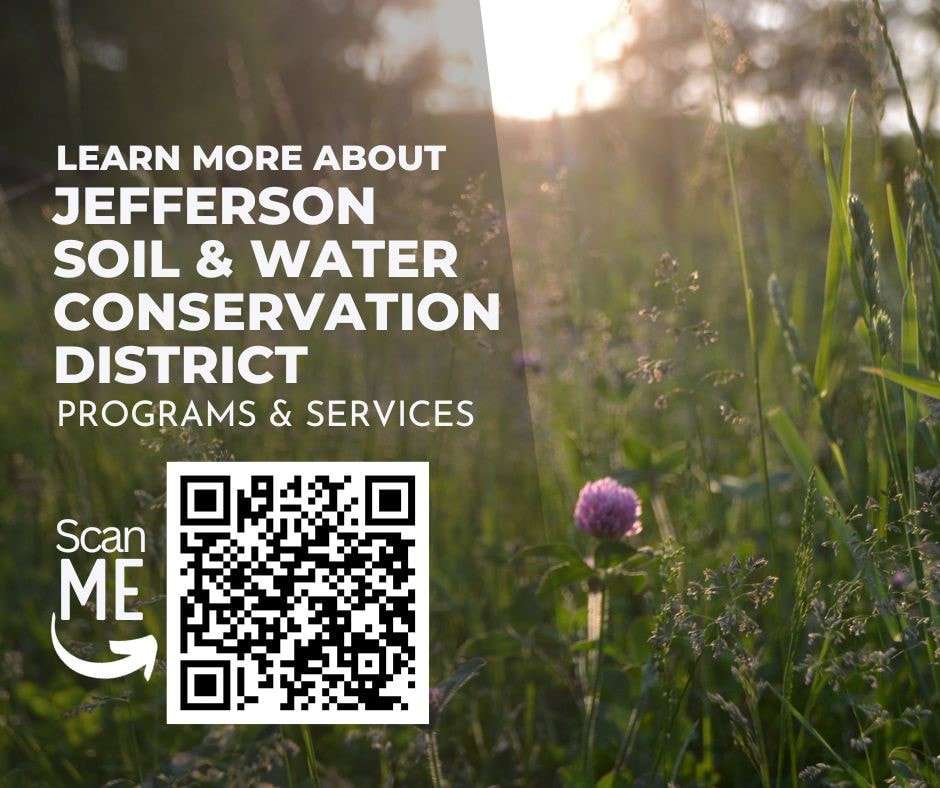- 2023 Native Tree and Shrub Sale
- >
- Elderberry (Sambucus canadensis)
Elderberry (Sambucus canadensis)
Height: 5 to 12 feet
Spread: 5 to 12 feet
Bloom Time: June to July
Bloom Description: White
Sun: Full sun to part shade
Suggested Use: Wildlife, Rain Gardens, Naturalized Areas
Tolerate: Wet Soils and Clay Soils
Native to: Jefferson County
The Elderberry is a classic and historically used shrub that is a vigorous grower that puts on great displays with its lacey leaves, broad white showy flowers, and black berries.
Elderberry prefers medium to wet soils, but will quickly adapt to a range of soils. Best grown from seed or purchased in container pots as the roots do not make it that agreeable to transplanting or relocation once established. The plant does tolerate heavy pruning to keep it in a space or at a desired size.
During the summer months if one would drive around the Jefferson County countryside they would surely notice the large flat-topped lemon-scented white flowers of Elderberry on full display. The flowers give way to a dark, nearly black, edible berry (drupe) cluster that is used to make jams, jellies, pie fillings, and elderberry wine. However, it should be noted that the berry is individually born, is majority hard seed, is quite bitter on its own, and is quite time consuming to harvest. The production of any of the aforementioned delectables requires a lot of elderberries, sugar, and patience.
William Bartram sold the Elderberry as Sambucus and noted in his catalog: “early flowering and handsome; its coral red berries in large clusters, ripe abt midsummer.” In Carroll County, Ohio, a railroad was built in 1850 extending from Carrollton to Oneida and passed through several low lying damp areas that had elderberry plants crowing the tracks. The railroad was very much a grassroots effort and had a rundown second hand locomotive which creeped along the tracks. It was stated that the train moved so slowly and the elderberries were so plentiful and infringed so much on the tracks that passengers could pick enough elderberries to supply a pie by the time they reached Oneida. The railroad was ultimately dubbed the “Elderberry Line” a name that was reused when an excursion train on the same tracks operated between 1996-2002.
Elderberry is a vital source of food for many wildlife species. The elderberries are so desired by birds that there is high competition to obtain the fruit and the plants are stripped clean within hours of the fruit becoming ripe or nearly ripe. The Elderberry is a critical food source for migratory birds. The flowers only produce pollen and are an important midsummer source for bees. Native bees also use the hollow stems of the Elderberry as a shelter and a place to raise young. ■






